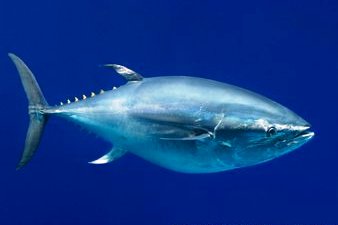
Fishing, logging, mining, agriculture and other activities to satisfy our growing appetite for resources are threatening the survival of the Pacific Bluefin Tuna, Chinese Pufferfish, American Eel and Chinese Cobra, while the destruction of habitats has caused the extinction of a Malaysian mollusc and the world’s largest known earwig, and threatens the survival of many other species – according to the latest update of the IUCN Red List of Threatened Species™ released on November 17 at the IUCN World Parks Congress taking place in Sydney, Australia.
The IUCN Red List, which celebrates its 50th anniversary this year, now includes 76,199 assessed species, of which 22,413 are threatened with extinction. As nearly half of the newly assessed species occur within protected areas, IUCN calls for better management of these places to stop further biodiversity decline.
“Each update of the IUCN Red List makes us realize that our planet is constantly losing its incredible diversity of life, largely due to our destructive actions to satisfy our growing appetite for resources,” says IUCN Director General Julia Marton-Lefèvre. “But we have scientific evidence that protected areas can play a central role in reversing this trend. Experts warn that threatened species poorly represented in protected areas are declining twice as fast as those which are well represented. Our responsibility is to increase the number of protected areas and ensure that they are effectively managed so that they can contribute to saving our planet’s biodiversity.”
With today’s update, the Pacific Bluefin Tuna (Thunnus orientalis) has moved from the Least Concern category to Vulnerable, which means that it is now threatened with extinction. The species is extensively targeted by the fishing industry for the sushi and sashimi markets predominantly in Asia. Most of the fish caught are juveniles which have not yet had a chance to reproduce and the population is estimated to have declined by 19 to 33% over the past 22 years.
Existing marine protected areas do not provide sufficient protection for the species. The expansion of marine protected areas, within 200 miles of the coast and incorporating breeding areas, could help conserve the species, according to IUCN experts.
“The Pacific Bluefin Tuna market value continues to rise,” says Bruce Collette, Chair, IUCN Species Survival Commission Tuna and Billfish Specialist Group. “Unless fisheries implement the conservation and management measures developed for the Western and Central Pacific Ocean, including a reduction in the catches of juvenile fish, we cannot expect its status to improve in the short term.”
The Chinese Pufferfish (Takifugu chinensis) has entered the IUCN Red List as Critically Endangered. Its global population is estimated to have declined by 99.99% over the past 40 years due to overexploitation. A popular food fish in Japan, it is among the top four fugu species consumed as sashimi. Being one of the world’s most poisonous fish, fugu needs to be expertly prepared before consumption. The Chinese Pufferfish occurs in several marine protected areas throughout the coastal waters of China. Conservation measures, such as the creation of marine protected areas, which are annually closed to trawling, have been implemented. However, harvest still needs to be urgently controlled to prevent the species’ extinction, say IUCN experts.

The American Eel (Anguilla rostrata), listed as Endangered, is threatened by barriers to migration; climate change; parasites; pollution; habitat loss and commercial harvest. Due to the decline of the Japanese Eel (Anguilla japonica), also listed as Endangered, the intensive eel farming industry in East Asia is seeking to replenish seed stock with other species, such as the American Eel. This has led to increased reports of poaching of the American Eel in the United States. Whilst the combination of these threats is placing pressure on the species, positive conservation action could result in an improvement in its status.
The Chinese Cobra (Naja atra) has been newly assessed as Vulnerable. Its population has declined by 30 to 50% over the past 20 years. Chinese Cobras are found in south-eastern China, Taiwan, northern Viet Nam and Lao PDR, and are among the top animal species exported from mainland China to Hong Kong for the food market. Chinese Cobras are found in protected areas such as Ailaoshan Nature Reserve, Daweishan Nature Reserve (Yunnan) and Kenting National Park (Taiwan). Although international trade in the species is regulated, there is an urgent need to strengthen national conservation initiatives to ensure its survival.


















